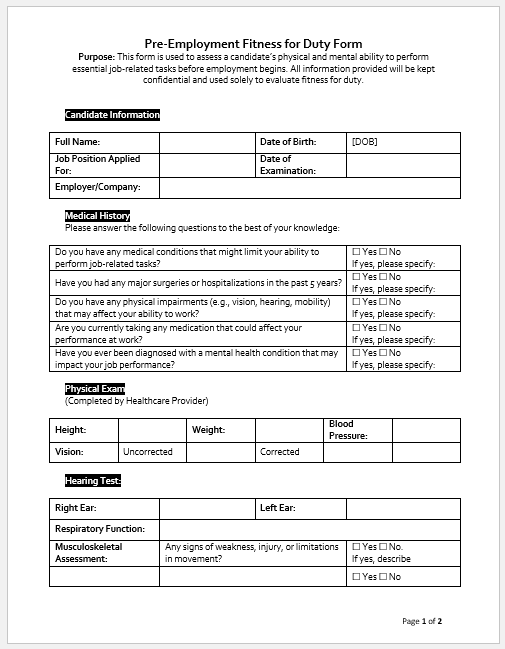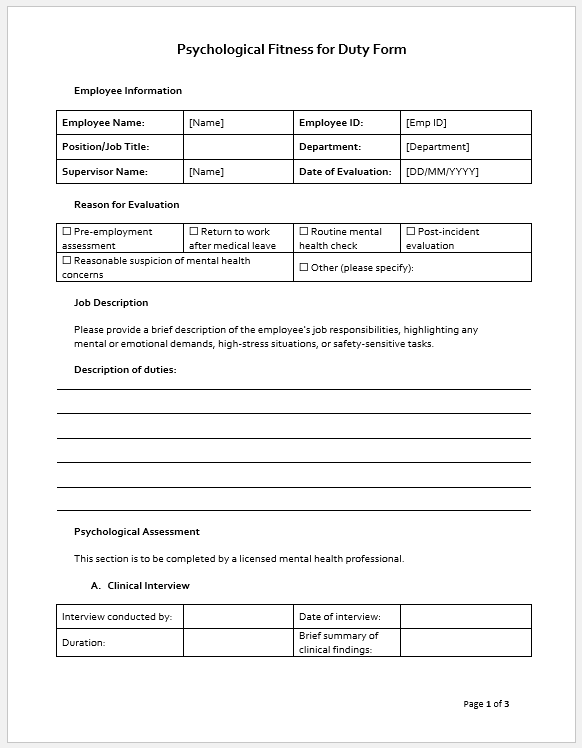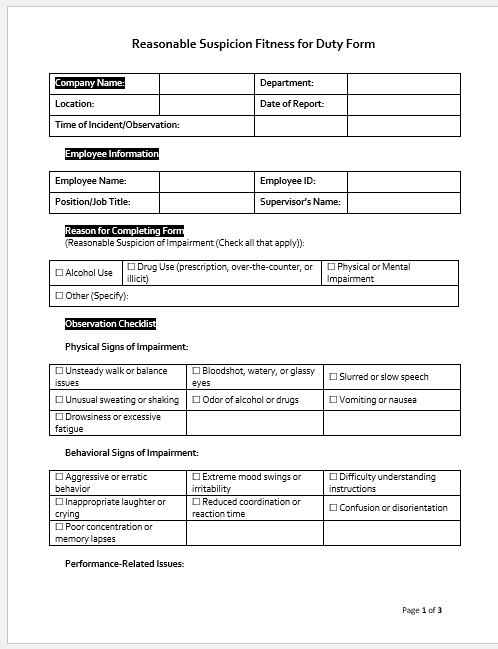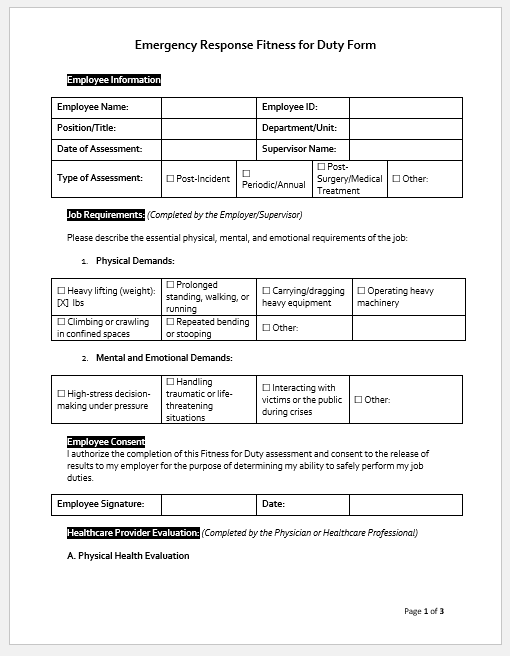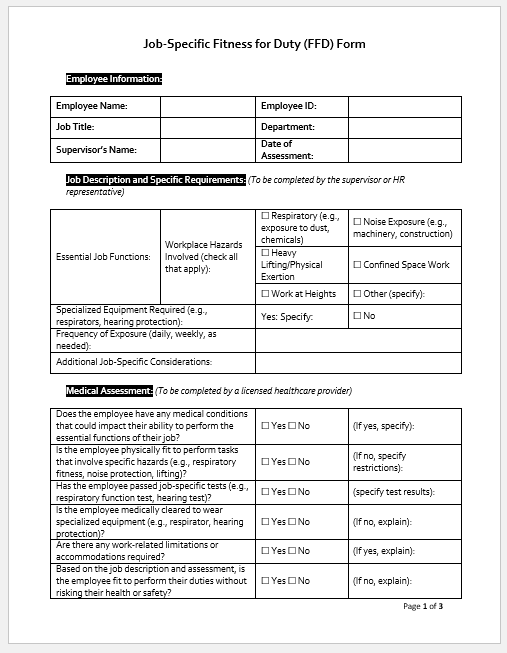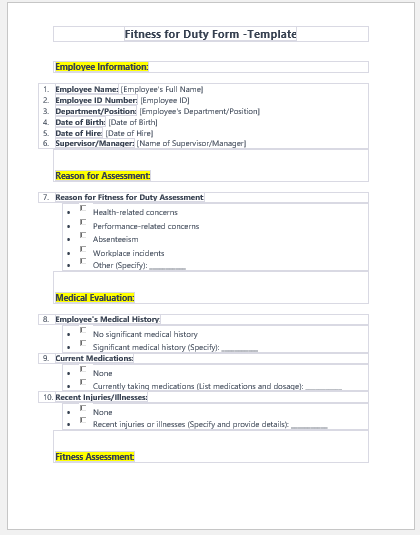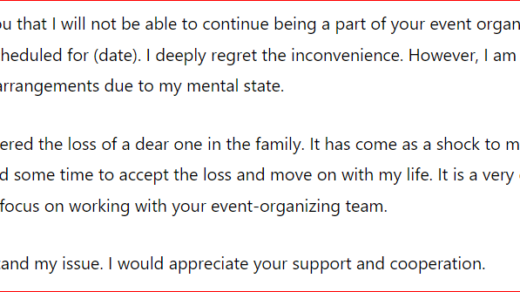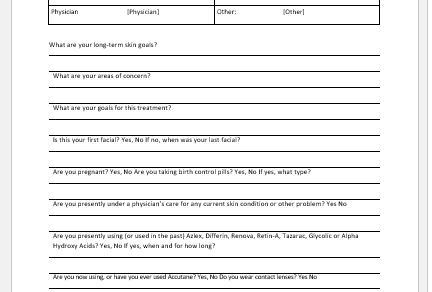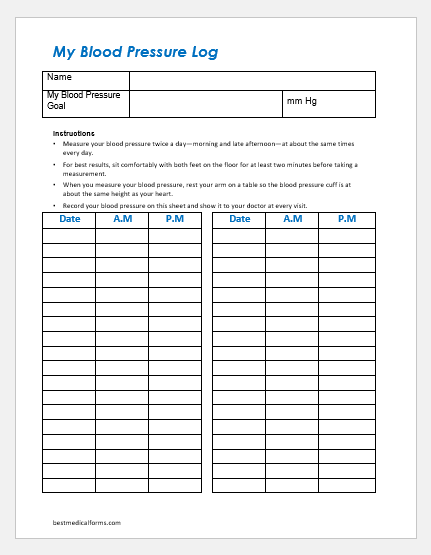All employees must be fit so that all workplace duties can be completed. When any employee is unfit, issues can likely arise, which can negatively impact workplace activities. This is why employees must not go to work and should stay home to recover when they are unfit. In this way, limiting the risk of injuries and accidents occurring at work will be possible.
When the employee is exemplary, they can return to work. The employer must know that the employee is fit and can return to work without complications. It is essential to ensure the employee is OK to return to work.
What is a fitness-for-duty form?
Employers use this form to evaluate whether employees can return to work after experiencing an illness or injury. This document can help limit the risk of injuries and accidents at work and help the employee return to work as quickly as possible.
Who uses the fitness for duty form?
The employer can use the form to see when and if the employee can return. The employee will sign the form and get it signed by the relevant authorities so that the employer can know if the employee is, in fact, OK to return to work. The employee must be physically fit to work; if not, issues can occur. Issues like these can be avoided when the form has been filled out by a medical practitioner or some authentic source so that it can be followed.
What are the benefits of using the fitness for duty form?
Count the benefits of using this form…
It helps the employer see if the employee can work again.
The form will provide details about whether the employee can return to work after a medical examination. This way, the employer can see whether the employee is fit to work and whether the employee will be able to carry out the tasks that are assigned to them. After the tests have been carried out, the employer will be more satisfied with whether the employee can pursue the tasks.
Limit the risk of injuries at work.
When an employee returns to work without being fit, injuries and accidents can likely occur. This can be costly to the company and hurt it. This is why all employees need to be fit to work effectively. When the employee is fit, this can help limit the risk of injuries and accidents at work. This is why the form can be used to see if this is true.
Help employees get back to work quickly.
When an employee has been off work, this can impact them financially, so they want to return to work as soon as possible. The company is even affected when employees are absent from work. This is why they must return to work quickly when physically fit. With the help of this form, employees will be able to get back and complete the tasks that need to be done by them. They can adjust back to work when the employer agrees that the employee is fit to work again.
Provide details about employee’s health.
The form evaluates different areas of the employee’s health to ensure their fitness. A medical examination may be conducted before the form is filled out.
In this test, employees must pursue different activities to show they are physically fit. These may include lifting weights, climbing, walking, standing, pushing, carrying, etc. There may also be a behavioral evaluation, whereby different areas will be looked at, like the employee’s understanding level, how they remember stuff, etc. A complete review like this will help the employer.
- Nursing Documentation Templates
- Mental Health Evaluation Forms
- Forms Used by Pediatricians
- Various Forms Related to Pregnancy Verification
- Common Forms Used by ENT Specialists
- Pain Diary Worksheet Template
- Forms Commonly Used by Old Age Homes
- Medical Treatment Consent Form
- Home Exercise Program Worksheet
- Forms Used for Mental Health Assessment
- Forms Used by Psychologists
- Medical Forms Commonly Used by/for Students
- Assessment Consent Form
- Forms Used by an Anesthesiologist
- Not Fit to Fly Certificate Template
- Home Visit Consent Form for Schools
- Important Forms Commonly Used by Pharmacies
- Important Forms Commonly Used by Dentists
